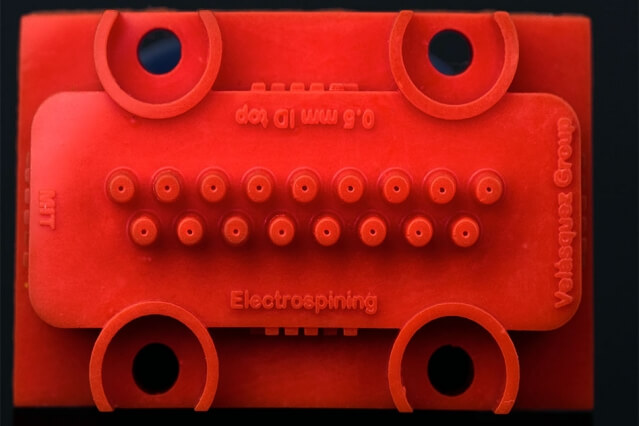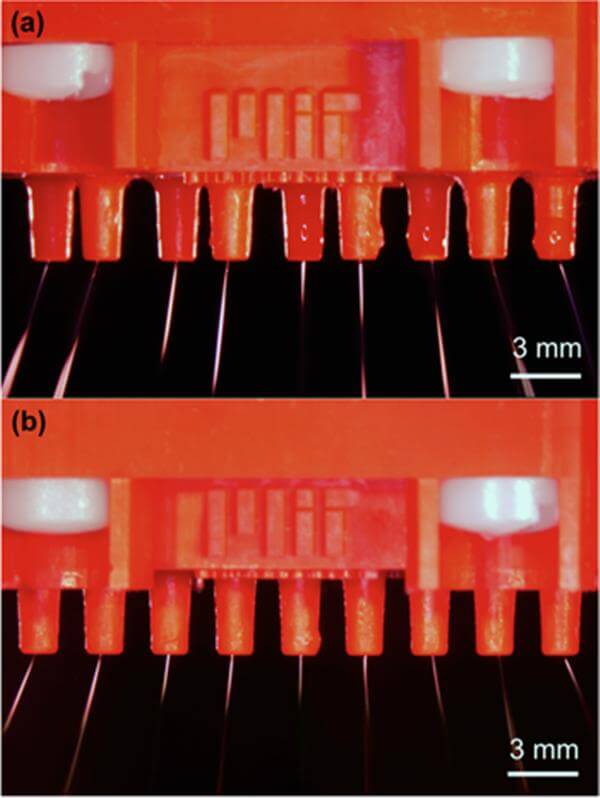Using 3D printing technology, MIT researchers have developed a microfluidic device capable of producing nanofiber meshes.
The production of nanofiber mesh may finally become commercially viable thanks to a research team at MIT in Boston, Massachusetts. As shown in the latest issue of the academic journal Nanotechnology, the team developed a device that is capable of producing nanofiber meshes of reduced diameter, whilst retaining a similar production capacity and efficiency as its top predecessor.
Nanometer-scaled fiber meshes are used across a variety of applications such as solar cells, engineered tissues and water filtration systems. However, manufacturing technologies have been expensive to run and thus hampered commercialization.
The latest MIT device has been created using a commercial 3D printer. It is a microfluidic device that features an array of nozzles which pump through polymer particles in fluid.
According to MIT Microsystems Technology Laboratories principal researcher Luis Fernando Velásquez-García, the near future is about 3D printing.
“My personal opinion is that in the next few years, nobody is going to be doing microfluidics in the clean room. There’s no reason to do so. 3D printing is a technology that can do it so much better – with better choice of materials, with the possibility to really make the structure that you would like to make. When you go to the clean room, many times you sacrifice the geometry you want to make. And the second problem is that it is incredibly expensive.”

How 3D Printing Helped MIT Researchers Develop Refined Microfluidic Devices
The application of fibers in commercial products is dependent on their diameter. With nanofibers, it is possible to create small-scale permeability, which is applicable to water filtration systems for example. In addition, the nanofibers benefit devices such as solar cells by increasing the ratio of surface area to volume.
The production of the latest device has been a refinement process. The group’s previous device produced nanofibers of irregular diameter. It was externally fed by an electric field drawing in the polymer solution. The latest emitters are internally fed, but the team found that the key to a regular diameter of nanofibers was wrapping the underlying channels that feed the bores into coils and tapering them along their length.
Due to the nozzle arrangement in rows, the device produces aligned nanofibers which are useful in tissue scaffolding applications.
According to Velásquez-García, another key advantage of using a 3D printer has been a fast test phase which allowed the team to rapidly revise their design. Usually, microfabricated devices in the group take two years from modeling to publication. However, 3D printing has sped up the process considerably to less than 12 months.
“A way to deterministically engineer the position and size of electrospun fibers allows you to start to think about being able to control mechanical properties of materials that are made from these fibers. It allows you to think about preferential cell growth along particular directions in the fibers – lots of good potential opportunities there,” adds Mark Allen, Professor at the University of Pennsylvania. “I anticipate that somebody’s going to take this technology and use it in very creative ways. If you have the need for this type of deterministically engineered fiber network, I think it’s a very elegant way to achieve that goal.”

Source: MIT
License: The text of "MIT Researchers Develop 3D Printed Device to Improve Nanofiber Mesh Production" by All3DP is licensed under a Creative Commons Attribution 4.0 International License.